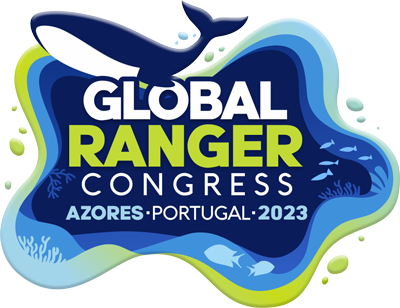
Faial
The city of Horta
You can’t miss a visit to the Marina, a place that will enchant you with all those colours and testimonies of sailors from all over the world, and all the drawings made as a symbol of good luck.
Another symbol of the capital city is Peter Café Sport, which represents a real institution. In order to enjoy a breathtaking view over the city, it is necessary to climb Monte da Guia, an ancient volcano that originated into the sea and which later combined with Faial island. Another must see destination is Ponta da Espalamaca, a cliff above the city of Horta from where you can observe the busy traffic of boats in the port.
The myth of paintings at the port of Horta
Faial island is famous for its paintings. Everything started a few years back from the initiative of one of the crew members of a sailboat anchored in Faial who proposed to make a painting as a symbol of his trip to Horta.
This first painting was followed by many others. It is a mosaic of colours which recalls the names of the boats that have docked in Horta.
According to the legend, the boats that do not leave a testimony of their passage on the island will suffer from bad luck!
Fabrica da Baleia de Porto Pim
The Fabrica da Baleia de Porto Pim will give you an insight into the life of whalers and the process of making oil and meal from cetaceans, especially sperm whales. It preserves all the machines used in whaling, a sector that was active on the island until the end of the 20th century and vital to Faial’s economy. Highly recommended.
Scrimshaw Museum
Complementing the Fabrica da Baleia, the Scrimshaw Museum presents an interesting collection of works made from whale parts or otherwise inspired by the memory of these cetaceans.
These artefacts were carved and crafted by the skilled hands of the island’s fishermen; the museum is connected to the Peter Cafe Sport, an iconic bar for all sailors and whalers around the world.
Horta Museum
Part of Faial’s history can also be discovered at the Horta Museum, located in the former Jesuit College, which houses excellent collections of documents, ethnography, photographs and artwork.
Vulcão dos Capelinhos
At the top of the Península do Capelo there is the Vulcão dos Capelinhos. This whole shaped during the passing of the years due to the overlap of the lava layers caused by successive eruptions. In the last years, the volcano has been active from 1957 to 1958; the lava accumulated and created the little island that combined to Faial.
The lighthouse and some of the houses that were destroyed by the eruption enhance the beauty of this breathtaking volcanic landscape; if you love trekking, it is possible to go on a volcano hike of about 3 km.
It is also possible to visit the Interpretation Center of the Natural Park, where it is possible to learn more about the volcanic and geological phenomenons of the Azores islands. If you are interested in visiting the volcano and the center, we recommend to book in advance as these activities have a limited number of participants.
Caldeira
Located in the geographical center of Faial, Caldeira is a huge volcanic crater. It is often surrounded by the fog, which doesn’t allow to fully enjoy the beauty of this magical place. It is very beautiful to walk among the hydrangeas that lead to the panoramic viewpoints from where it is possible to admire the whole crater.
Caldeira is characterised by a lush vegetation; here there are several trees like cedars, junipers, and beeches, as well as ferns and mushes. Tourists visiting this area of Faial tend to keep their voice low in order to respect the majesty of this place. It is also possible to go on an excursion to circumnavigate the crater; the whole route is about 8 kilometres, allowing you to observe the area from different points of view.
Villages and ports
Faial is home to charming and traditional seaside villages. Visit Porto do Comprido, for example, a great place to relax and experience some of the sea life that this Azores island has to offer. The north coast also offers characteristic seaside spots, such as the small ports of Cedros and Salao.
The beaches of Faial
Although Faial is a place chosen by lovers of wild nature and hiking, it is not disdained by those who love the sea and relaxation: it has many different areas where you can swim, a factor that distinguishes it from other islands of the Azores, where the real beaches are scarce.
Porto Pim
If you are in Horta, the nearest beach is Porto Pim, which is distinguished from the rest of the island for its fine and clear sand. It winds very gently into the sea, and is therefore an ideal place for small children. However, it is a beach that gets very crowded during the high season, so if you are not a lover of chaos, do not go there!
Praia de Pedro Miguel
If you are looking for an oasis of peace instead, then take refuge in Praia de Pedro Miguel. It’s a secluded place where tourists rarely arrive in droves. Equip yourself with a sack lunch and spend a beautiful day at the beach here.
Faja
Faja is instead a wide beach of black sand; here the sea is less calm and the waves are high up to the shore. The beach is free; however, there is also a refreshment stand, showers and toilets nearby.
Almoxariffs
Finally, interesting is the beach of Almoxariffe, which is located east of Horta. It is a very popular sandy beach, accessible by an avenue, with plenty of parking, restaurants and bars.
Natural pools
In addition to these beaches are a series of natural pools, which originated from the conformation of the coast. Access to these saltwater pools is via stairs and ramps, and some are more suitable than others for small bathers! We mention Comprido, Porta da Eira and Porta da Salao.
Activities in Faial
The island of Faial offers so many activities to visitors that you will find it hard not to try at least one! The landscapes, the culture, the biodiversity of the vegetation, the geological formations and the beautiful sea of the Azores offer unique and unrepeatable moments. The link with the sea remains strong throughout the island, especially in its capital Horta.
Whales and dolphins
You must absolutely visit the Whale Station of Porto Pim, an old factory where whale meat was processed. The cetaceans were also used to extract oil, which was then used to lubricate machinery and generate energy on the island.
Once upon a time whaling was fundamental for the Azores and for the subsistence of its inhabitants. With the advancement of progress, fishermen have now stopped killing them, but today they are still fundamental to the island’s industry: tourists in fact love to go out to sea for whale watching, in the hope of admiring and photographing them up close.
During the excursion you can also spot other cetaceans, including dolphins. Another way to learn about the heritage of the sea is to participate in open water diving, accompanied by experienced divers. The waters and winds then allow for various water sports, such as sailing, windsurfing, boating and surfing.
Trekking
The best way to get to know the island of Faial is to walk around it. There are many paths for trekking, some very long, including one that connects the 10 volcanoes of Faial, covering a total distance of 27 km. The advice is to start in Caldeira and end in Porto do Comprido.
Venture also to the Trilho dos Caminhos Velhos, a path that links the ancient paths used by the inhabitants of the northeast of the island.
Another very interesting route is the ascent to Monte Da Guia, from the center of Horta. It is an excursion that takes about 2 hours.
Events and festivals
On theisland of Faial on June 24 is celebrated the feast in honor of Saint John (Festa de São João). In August there is the Semana do Mar, the week of the sea, dedicated exclusively to nautical sports, which makes Horta the “capital of sailors“.
Where to stay in Faial
There are several options available to anyone who wants to visit Faial. Among the most touristic places there is the village of Varadouro, a holiday place for the inhabitants of Horta themselves. The village has a great location, sheltered by a high cliff, so it always maintains a mild climate. Choose Varadouro if you are looking for simple and spartan accommodations.
On the other hand, Almoxariffe is a place loved by young people, as during the summer evenings it always offers something to do. In the main square of the village there are often musical groups that play live music. In addition, there are really cheap accommodations, such as the municipal camping that is located on the waterfront.
To these small and typical seaside towns, should be added the capital Horta, certainly the most served area of the island. Here, in addition to room rentals and budget hotels, there are also more luxurious accommodations for those looking for maximum comfort. If you intend to explore the other islands of the archipelago, it is better to stay in Horta, because daily ferries leave for Pico, Sao Miguel and Terceira.


